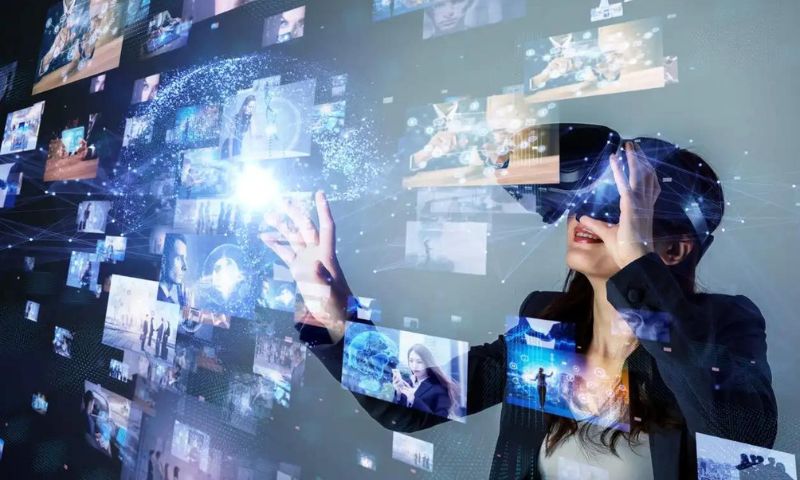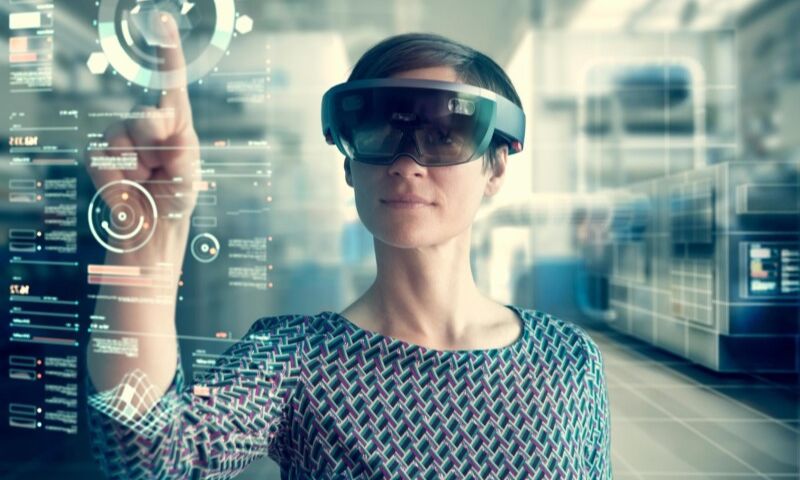Imagine a world where decentralized content creation and sharing in education breaks down walls, inviting every student and teacher into a global classroom. It’s happening right now and transforming how we learn and teach. With the click of a button, educators across continents are swapping ideas, resources are flowing freely, and students are engaging with learning like never before. The revolution isn’t coming; it’s here! Join me as we explore this exciting shift in education, from peer-to-peer networks on the blockchain to robust digital libraries accessible to all. Get ready to witness how decentralized content creation is reshaping the way we think about collaboration in education.
Embracing Decentralization: The Future of Educational Collaboration
Implementing Blockchain in Peer-to-Peer Learning Networks
Peer-to-peer learning networks are a big deal. They let students teach each other. We use blockchain to make these networks safer and more trustworthy. This technology keeps a clear record of all the data shared. It’s like a digital ledger that can’t be changed. Blockchain also makes sure the students’ work is theirs and only theirs.
In these networks, everyone shares ideas and grows. Say Sara writes a cool essay. Tom can read it, learn, and maybe add his own thoughts. This is how students help each other. Kate, a teacher, can see all this. She can guide them without taking control. It’s all about staying connected and building trust.
Advantages of Decentralized Platforms for Educators
Now, let’s talk about teachers. Decentralized platforms help teachers a lot. They can share their teaching tools with teachers around the world. Let’s think about a math game Paul made. With blockchain, he can now share it far and wide. And he knows it’s safe. He can even get credit each time someone uses it.
These platforms open doors. They make it easier for teachers to find what they need. And since it’s decentralized, it’s harder for others to block or limit access. Maria, a science teacher, can get resources from across the globe. She can bring new stuff to her class all the time.
Also, we can’t forget the freedom. In regular systems, someone is always in charge. But here, teachers call the shots. They choose what to use and how to use it. It’s all about sharing and learning together. It’s teamwork at its best.
Blockchain has changed how we think about education. It’s a powerful tool that brings students and teachers together. It helps create a space where everyone can share and learn from one another. It’s smart, secure, and all about teamwork. And really, isn’t that what learning should be all about?
Enhancing Academic Integrity and Resource Sharing
Leveraging Smart Contracts for Assignments and Accreditation
Imagine a classroom that’s fair and secure for everyone. This is where smart contracts come in. These are like unbreakable promises made by a computer. They check homework and tests without errors. Smart contracts help teachers and students trust what’s happening. They also hold records of what you’ve learned in a super safe way. And they never lose this data.
When you complete a course, smart contracts can prove it. This way, no one can fake their school records. It’s a big deal for students and their future jobs. Schools across the world can see your real success. Plus, everyone can share resources and help each other learn better. We want learning to be something everyone can trust. Smart contracts make it happen.
Developing Decentralized Digital Libraries for Global Access
Now, let’s talk about books and info we all can reach. Think about a library that’s open to the world. That’s a decentralized digital library. They don’t have walls or late fees. Also, they don’t close at night.
Anyone with a computer can look at books and videos, anytime. It doesn’t matter where you live or how much money you have. These libraries are free for all. They make it easy to share knowledge. People that make the content can also make sure it stays their own. So, it’s great for the ones learning and the ones teaching. We bring the world’s knowledge to your fingertips. It’s learning made without limits for everyone, everywhere.
Fostering Innovation in Pedagogy through Blockchain
Incorporating Tokenization to Incentivize Student Engagement
Let’s dive into how blockchain can make learning fun and rewarding. Picture this: students earn tokens for completing tasks or helping peers. These tokens can buy extra credit or other school perks. It’s like getting gold stars in class, but way cooler and more high-tech. This not only boosts student interest but also teaches them about digital currency along the way.
Blockchain’s magic lies in its ability to record and reward effort securely. For example, when a student submits an assignment, the blockchain can verify it and automatically issue tokens. This instant reward can ignite a student’s drive to learn more and participate actively.
Driving Micro-Credentialing in Education for Lifelong Learning
Now, let’s talk about something called micro-credentialing. It’s a nifty way to show what you know. Instead of waiting years to get a diploma, students can earn badges for specific skills as they learn them. These badges, or micro-credentials, are perfect for today’s fast-paced world.
Blockchain can securely store these credentials. That means no one can fake their skills, and everyone knows exactly what you’ve achieved. It’s like having a digital backpack of badges you earn throughout life.
So, why is blockchain good for this? It’s because it’s tough to mess with. Once you earn a badge, it stays with you, safe and sound. Plus, if you move schools or even countries, your credentials come with you with no hassle.
In essence, blockchain isn’t just a tech buzzword. It’s changing how we learn and share knowledge. It’s making education fair, fun, and future-ready. Now, isn’t that something to get excited about?
Building Community: DAOs and Decentralized Networks
Expanding Educational Opportunities with Decentralized Autonomous Schools
Decentralized autonomous schools are new in education. They work like a community, not a typical school. Each person helps decide what the school does. This way, students and teachers have a real say in their learning.
These schools are on the internet, using educational blockchain applications. They can let folks from anywhere join in. This is huge because it means no matter where you live, you can learn from different places. Blockchain in education means it’s fair and open.
A big plus is that these schools can share resources easy. Open educational resources are key here. They make learning stuff free and open to all. This helps everyone learn more, from math to history.
Encouraging Educator and Student Participation in Content Creation
Now, let’s talk about how teachers and students make their own learning stuff. When everyone chips in, education gets way better. Decentralized platforms for teachers let them share what they know with others across the globe.
Students can put their own stuff out there too. This means they can teach others something cool they know. Student content creation is fun and helps you learn more.
Decentralized education systems are cool for a few reasons. First, they keep things fair because no one owns the network. They also keep your work safe with blockchain-secured assignments. This is a smart way to check work without losing or changing it.
Smart contracts for education are a deal made in code. They make sure everyone follows the rules. It’s good for handing in homework or getting your grades.
We also got educational DAOs. These are groups where everyone gets to make choices. They can vote on big decisions, like what classes to offer. It makes sure that what you learn is what you want to learn.
These DAOs are powered by peer-to-peer networks. This means kids and teachers can work together easy, without a big boss in the middle. It’s neat because it lets small schools do big things.
So there you have it. Using the net for school can open up lots of doors. It can make learning really come to life, with everyone getting a chance to join in. We’re talking about a real team effort. And with blockchain, this team is super safe and sure.
That’s the scoop on how decentralized networks and DAOs change how we learn. They bring people together from far away places. They share cool learning stuff. And best of all, they let everyone have a say. This is how we make learning awesome for everyone, everywhere.
To wrap it up, we explored how blockchain can reshape education. We saw how it can boost peer learning and help teachers on decentralized platforms. Using smart contracts ensures that academic work stays honest. It also lets us share learning resources without borders. Blockchain isn’t just tech; it’s a tool to make learning more exciting. It lets us reward students who get involved and supports ongoing education through small, recognized skill sets.
Building a learning community with blockchain shows us a world where schools operate on shared rules without a central power. Here, everyone can make content and learn from each other. The future is clear: embracing these tech tools in education could lead to a smarter, more connected world. Trust in these ideas, dive in, and let’s lead the way to innovation together.
Q&A :
What is decentralized content creation and sharing in education?
Decentralized content creation and sharing in education refers to the distribution and collaboration of educational materials across a network that isn’t controlled by a central authority. This approach leverages technology, typically blockchain, to facilitate the sharing of educational resources among teachers, students, and institutions, allowing for transparent and immutable records of content ownership and usage.
How does decentralized content creation benefit educators and students?
Decentralized content creation offers numerous benefits for educators and students. For educators, it means having increased control over their materials and the potential to receive direct compensation for their work. Students, on the other hand, benefit from a wider range of educational resources that are generally more diverse, up-to-date, and accessible. The system also promotes collaboration, innovation, and peer-to-peer learning.
Can decentralized content sharing improve access to education?
Yes, decentralized content sharing can significantly improve access to education. By removing centralized barriers and leveraging a distributed network, educational resources can be made available to a broader audience, including those in underprivileged areas. This system reduces the costs associated with content distribution and can facilitate a more equitable educational landscape.
What role does blockchain technology play in decentralized education systems?
Blockchain technology is fundamental in decentralized education systems as it enables secure, transparent, and permanent records of transactions and content sharing. It creates a trustless environment where contributions and usage can be traced without the need for intermediary verification. This assures the authenticity of educational materials and encourages fair use, as well as proper attribution to creators.
Are there any challenges associated with decentralized content creation and sharing in education?
While there are many benefits, decentralized content creation and sharing in education is not without challenges. These include issues related to digital literacy, the digital divide, ensuring content quality, and resistance from traditional educational institutions. Additionally, the technological infrastructure for supporting such systems is still in development, and there can be legal and regulatory hurdles when it comes to intellectual property rights on a global scale.


